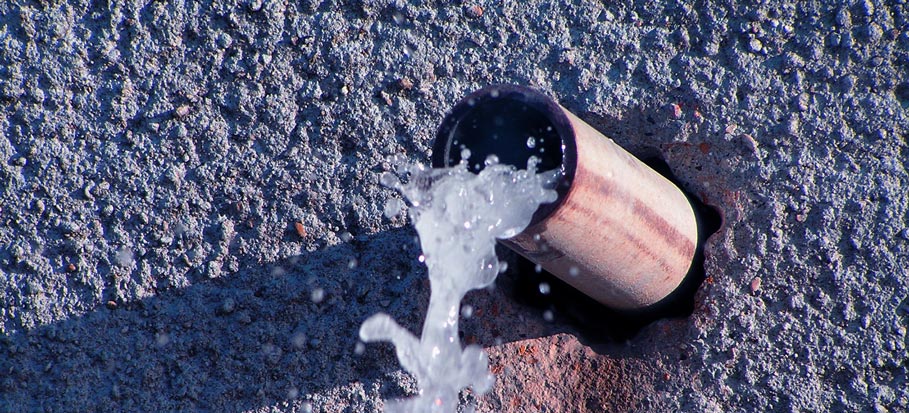Expose Concealed Water Line Leaks: 6 Proven Detection Techniques
Expose Concealed Water Line Leaks: 6 Proven Detection Techniques
Blog Article
We've stumbled on this post about Locating water leaks directly below on the web and thought it made perfect sense to relate it with you on my blog.

Early detection of leaking water lines can mitigate a possible disaster. Some tiny water leakages may not be visible.
1. Take A Look At the Water Meter
Examining it is a guaranteed way that assists you discover leakages. If it moves, that indicates a fast-moving leak. This means you might have a slow leak that can even be below ground.
2. Check Water Usage
If you identify abrupt modifications, despite your usage being the exact same, it indicates that you have leakages in your plumbing system. A sudden spike in your bill shows a fast-moving leakage.
A stable boost every month, also with the exact same routines, shows you have a sluggish leak that's also slowly rising. Call a plumber to extensively check your residential property, particularly if you feel a warm area on your flooring with piping below.
3. Do a Food Coloring Test
30% comes from toilets when it comes to water usage. Examination to see if they are running correctly. Decline flecks of food shade in the container and wait 10 minutes. There's a leak between the storage tank and also dish if the color somehow infiltrates your bowl during that time without flushing.
4. Asses Exterior Lines
Don't fail to remember to inspect your outdoor water lines as well. Test faucets by affixing a garden pipe. Should water permeate out of the link, you have a loosened rubber gasket. Replace this and also make sure all connections are limited. It will help get it properly took a look at as well as kept every year if you have actually got a lawn sprinkler system. One small leak can waste lots of water and spike your water costs.
5. Evaluate the circumstance and check
House owners need to make it a behavior to examine under the sink counters as well as even inside closets for any type of bad odor or mold and mildew development. These two red flags indicate a leakage so prompt focus is called for. Doing routine evaluations, even bi-annually, can conserve you from a significant issue.
If you know your home is currently old, maintain a watchful eye on your heating units, hoses, pipelines etc. Look for discolorations and damaging as many pipelines and appliances have a life expectancy. They will additionally naturally deteriorate due to deterioration. Don't wait for it to escalate if you think dripping water lines in your plumbing system. Call a specialist plumber immediately so you do not end up with an awful mess in your house.
Early detection of leaking water lines can reduce a prospective catastrophe. Some little water leaks might not be visible. Checking it is a guaranteed method that aids you discover leakages. One little leak can squander tons of water as well as surge your water bill.
If you presume dripping water lines in your plumbing system, don't wait for it to intensify.
WARNING SIGNS OF WATER LEAKAGE BEHIND THE WALL
PERSISTENT MUSTY ODORS
As water slowly drips from a leaky pipe inside the wall, flooring and sheetrock stay damp and develop an odor similar to wet cardboard. It generates a musty smell that can help you find hidden leaks.
MOLD IN UNUSUAL AREAS
Mold usually grows in wet areas like kitchens, baths and laundry rooms. If you spot the stuff on walls or baseboards in other rooms of the house, it’s a good indicator of undetected water leaks.
STAINS THAT GROW
When mold thrives around a leaky pipe, it sometimes takes hold on the inside surface of the affected wall. A growing stain on otherwise clean sheetrock is often your sign of a hidden plumbing problem.
PEELING OR BUBBLING WALLPAPER / PAINT
This clue is easy to miss in rooms that don’t get much use. When you see wallpaper separating along seams or paint bubbling or flaking off the wall, blame sheetrock that stays wet because of an undetected leak.
BUCKLED CEILINGS AND STAINED FLOORS
If ceilings or floors in bathrooms, kitchens or laundry areas develop structural problems, don’t rule out constant damp inside the walls. Wet sheetrock can affect adjacent framing, flooring and ceilings.
https://www.servicemasterbyzaba.com/blog/how-to-detect-water-leakage-in-walls/

Do you enjoy reading about Top leak detection hacks? Give feedback directly below. We would be delighted to see your reactions about this blog post. In hopes that you visit us again before long. Sharing is caring. You won't know, you could be doing someone a favor. I love reading our article about Top leak detection hacks.
Book Appointment Now Report this page